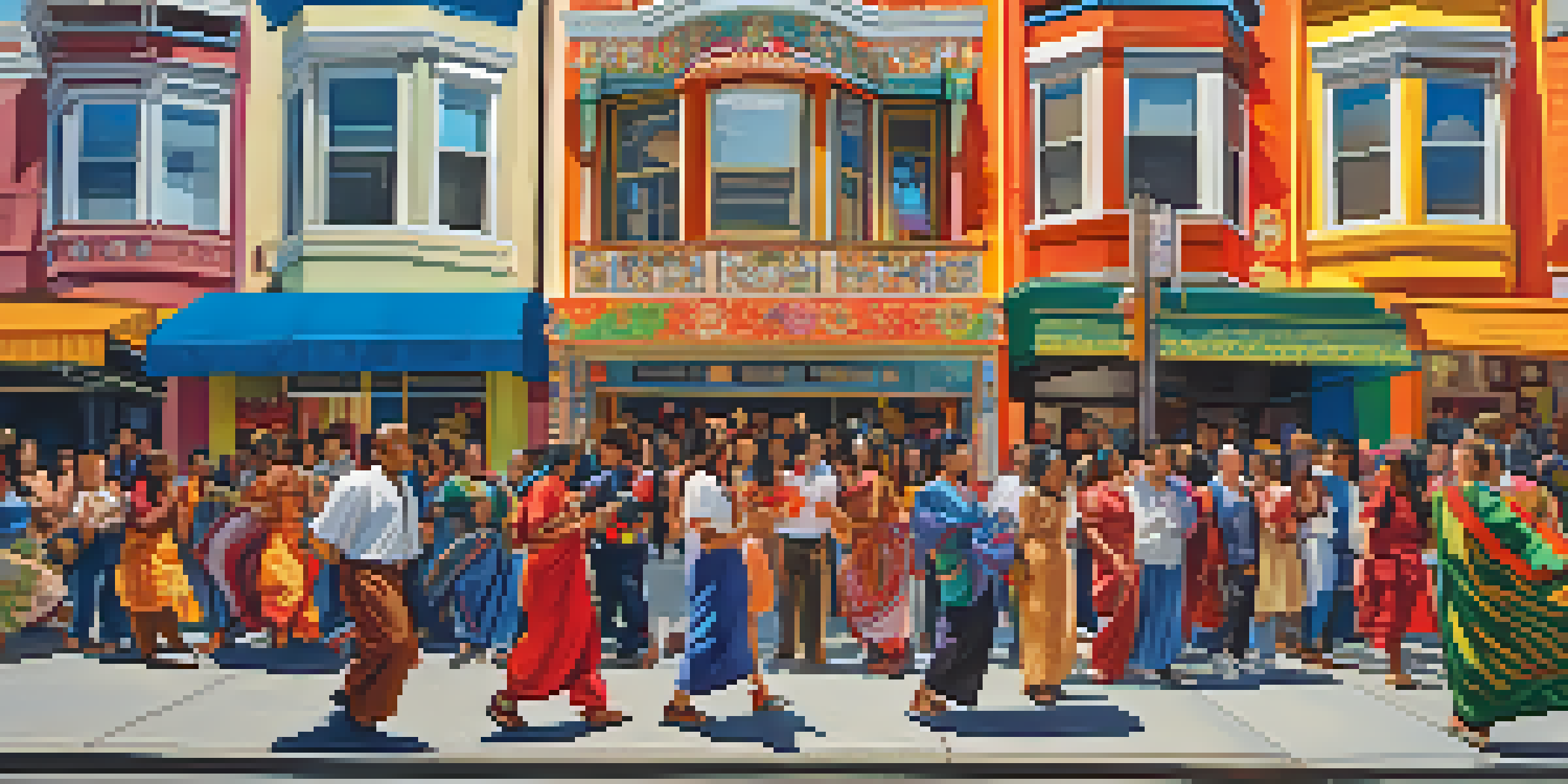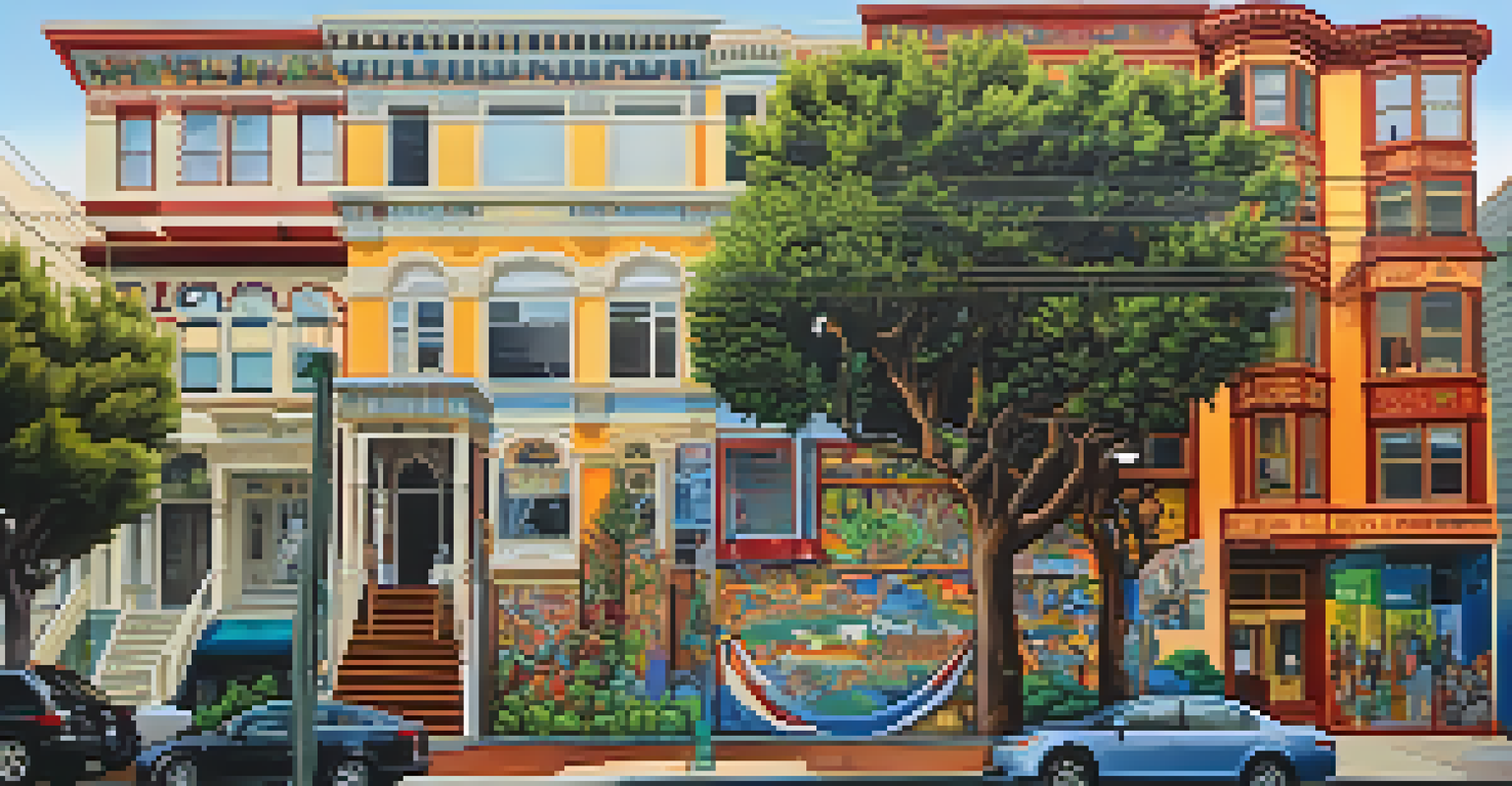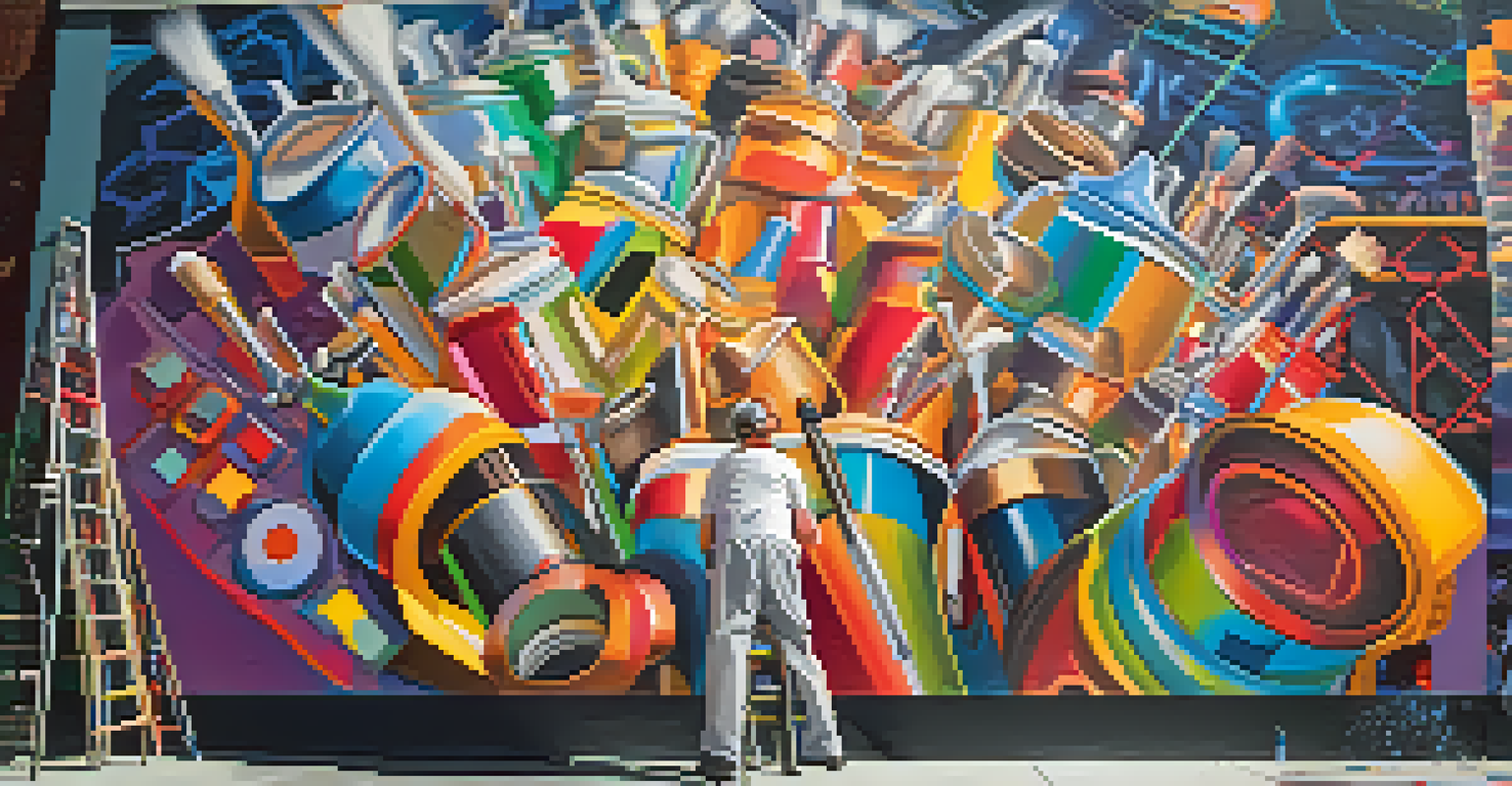Street Art: A Reflection of San Francisco's Cultural Diversity

The Origins of Street Art in San Francisco
Street art in San Francisco has roots that trace back to the 1960s and 70s, when counterculture movements began using public spaces to express their ideals. Artists turned to walls, sidewalks, and alleys as canvases to voice their thoughts on social issues, politics, and identity. This movement was not just about aesthetics; it was a platform for marginalized voices seeking recognition.
Art is not just a reflection of society; it is a call to action.
As the city evolved, so did its street art. While early works often highlighted political messages, contemporary artists have expanded their focus to include personal narratives and cultural expressions. This evolution reflects the city's changing demographics and the influx of diverse populations, each bringing their unique stories and styles.
Today, street art is a vibrant part of San Francisco's identity, showcasing influences from various cultures. It serves as a visual dialogue that connects communities, making the city a living gallery where every corner tells a story.
Diverse Voices: Artists Shaping the Scene
San Francisco boasts a rich tapestry of artists who contribute to its street art scene, each representing different backgrounds and cultures. For instance, artists like Zio Ziegler and Swoon have gained international recognition, but their roots are firmly planted in the local community. These artists use their craft to address issues such as immigration, identity, and social justice.

Public art initiatives have also played a crucial role in fostering diverse talent. Projects like the Mission Mural Project encourage artists from underrepresented communities to express their heritage and perspectives. This collaborative approach not only beautifies the neighborhood but also empowers artists to share their stories.
Street Art Reflects Community Voices
San Francisco's street art serves as a platform for marginalized voices, showcasing diverse cultural narratives and addressing social issues.
Through their work, these artists create a sense of belonging and pride, inviting viewers to engage with their cultural narratives. Their art acts as a bridge, connecting people across different backgrounds and fostering understanding in a city known for its diversity.
Street Art as a Cultural Commentary
Street art often acts as a mirror reflecting societal issues and cultural dynamics. In San Francisco, murals and graffiti provide commentary on gentrification, homelessness, and racial inequality, sparking conversations that might otherwise remain unspoken. Artists use their platforms to challenge the status quo and advocate for change, making their work relevant and impactful.
Public art is a way for people to communicate with each other, to express their identity and their culture.
For example, murals that depict the struggles of the local community often tell stories of resilience and hope. They invite residents and visitors alike to reflect on the challenges faced by many in the city, creating a sense of urgency and awareness. This commentary is not only artistic but also serves as a call to action.
By addressing pressing issues through art, these artists help foster a sense of empathy among viewers. Their work encourages people to look beyond the surface and understand the complexities of urban life in San Francisco.
The Role of Community in Street Art
Community involvement is essential to the street art culture in San Francisco. Local residents often collaborate with artists to create murals that celebrate their neighborhoods and heritage. This collaboration not only strengthens community ties but also ensures that the art resonates with those who live there.
Events like mural festivals and street art tours encourage community participation, allowing residents to connect with artists and learn more about their work. These interactions foster a sense of ownership and pride in the public art that adorns their streets. When communities are involved, the art becomes a reflection of collective identity.
Art as a Commentary on Society
Murals and graffiti in the city provide critical commentary on pressing issues like gentrification and homelessness, fostering empathy and awareness.
Moreover, these community-driven projects often highlight underrepresented voices, giving them a platform to share their stories. This inclusivity enriches the street art landscape, making it a true representation of San Francisco's diverse cultural heritage.
Public Spaces: The Canvas of Diversity
The streets of San Francisco serve as a dynamic canvas where cultural diversity thrives. Public spaces such as the Mission District and Tenderloin are renowned for their vibrant murals, each telling a unique story. As people walk through these neighborhoods, they encounter a visual feast that reflects the city’s rich cultural heritage.
These murals often celebrate significant cultural events or highlight important figures within the community. For instance, murals commemorating the contributions of the LGBTQ+ community can be found in the Castro, while those honoring the Latinx community thrive in the Mission. Each piece of art contributes to a larger narrative about the city’s history and the people who have shaped it.
By transforming public spaces into galleries, street art fosters a sense of belonging and pride among residents. It invites passersby to engage with the art, creating a shared experience that transcends language and cultural barriers.
The Impact of Technology on Street Art
In the digital age, technology has significantly influenced the evolution of street art in San Francisco. Artists now use social media platforms to showcase their work, gain recognition, and connect with a global audience. This newfound visibility allows local artists to share their cultural narratives beyond the confines of their neighborhoods.
Digital tools also empower artists to experiment with new techniques, blending traditional methods with modern technology. Augmented reality, for instance, introduces an interactive element to street art, allowing viewers to engage with the pieces in innovative ways. This fusion of art and technology expands the possibilities for expression and interaction.
Technology Enhances Street Art
Digital tools and social media have transformed street art, allowing artists to reach global audiences and engage viewers in innovative ways.
Furthermore, technology has spurred the growth of street art festivals and events that celebrate diversity. These gatherings not only promote local talent but also attract international artists, creating a vibrant exchange of ideas. As a result, San Francisco's street art scene continues to thrive, reflecting a dynamic mix of cultures and perspectives.
Preserving Street Art: Balancing Change and Heritage
As San Francisco continues to evolve, the preservation of its street art poses both challenges and opportunities. Gentrification and urban development often lead to the removal of iconic murals, sparking debates about the value of public art. While change is inevitable, preserving these cultural landmarks is essential for maintaining the city’s identity.
Efforts to protect street art have emerged, with initiatives advocating for the inclusion of murals in urban planning. Local organizations and artists are working together to create policies that ensure the survival of culturally significant pieces. This collaborative approach highlights the importance of community input in shaping the city’s artistic landscape.

By recognizing the historical and cultural significance of street art, San Francisco can strike a balance between progress and preservation. This not only honors the artists who have contributed to the city’s vibrant tapestry but also ensures that future generations can appreciate the stories told through these public works.